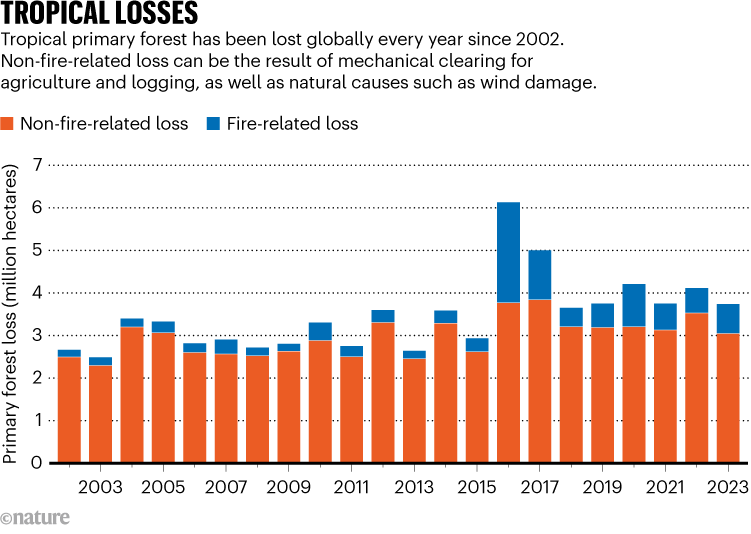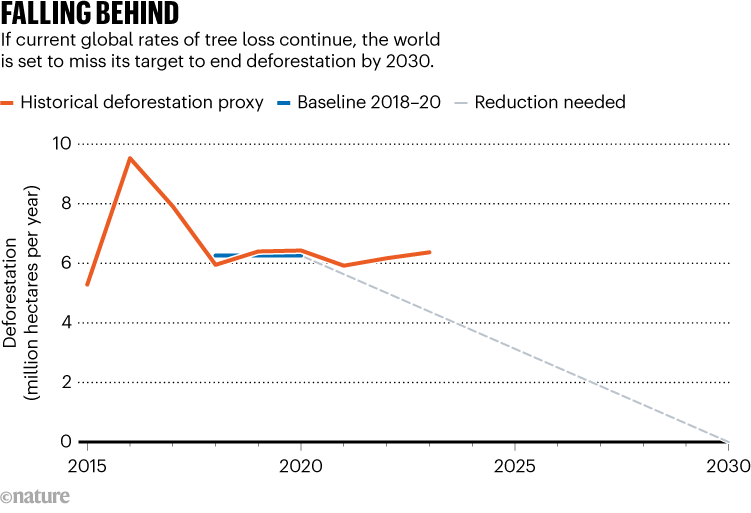Loss of pristine tropical forests slowed last year — but the world is still falling far short of a global goal to end deforestation by 2030. The findings, from an analysis of satellite data released this week, highlight the need to improve conservation of tropical forests to protect biodiversity and slow climate change.
In 2023, the tropics lost 3.7 million hectares of primary forest — areas of natural, mature forest cover that have not been recently cleared and regrown — the analysis found.
“Those tropical primary forests in particular represent some of the most important ecosystems to protect in order to avoid carbon emissions and biodiversity loss,” said Mikaela Weisse, director of Global Forest Watch at the World Resources Institute (WRI), an environmental think tank in Washington DC, at a press briefing. The WRI conducted the study with researchers at the University of Maryland in Riverdale.

Source: World Resources Institute
By analysing satellite data on tree cover, Weisse and her colleagues found a 9% reduction in the loss of primary tropical forests last year, compared with 2022 (see ‘Tropical losses’).
This reduction is mostly down to shifts in political leadership in Brazil, which saw a 36% decrease in primary-forest loss, and Columbia, where there was a 49% decrease, according to Weisse. But the researchers found that this progress was largely counteracted by increases in loss of tropical primary forest in countries including Bolivia, Laos, Nicaragua and the Democratic Republic of the Congo (see ‘Forested countries struggle’).

Source: World Resources Institute
Globally, loss of tree cover owing to both natural and human causes — in plantations as well as natural forests — increased by 24% from 2022 to 2023. This global rise was driven entirely by a fivefold increase in fire-related loss of tree cover in Canada. In the rest of the world, tree cover loss declined by 4%.
The researchers also found that the world is on track to miss a goal to halt and reverse forest loss due to human activity, or deforestation, by 2030. This goal was agreed in 2021 by more than 145 countries and territories that, between them, are home to 90% of the world’s forests.

Source: World Resources Institute
“To be on track, we need at least a 10% annual reduction in deforestation, but the persistence of the deforestation rate indicates we are far from this target,” says ecologist Dolors Armenteras at the National University of Colombia in Bogotá (see ‘Falling behind’). Meeting it will require stronger political will to tackle deforestation, along with greater international cooperation and more financial incentives to conserve existing forests, she adds.
“We are running out of time and may be reaching the tipping point of irreversible changes in the tropical-forest realm — that will affect us all, locally, regionally and globally,” says Weisse.






